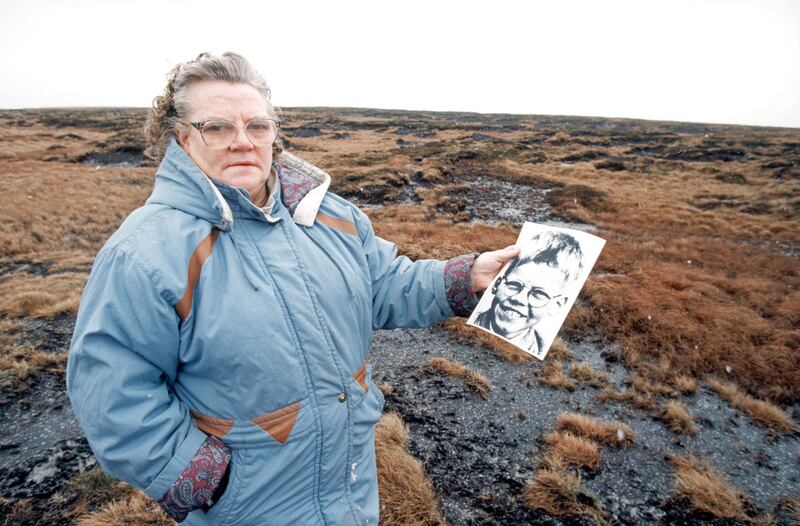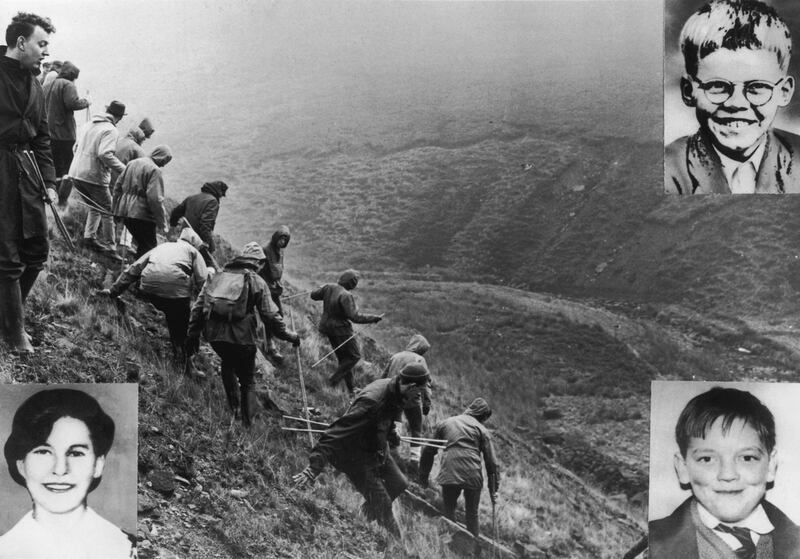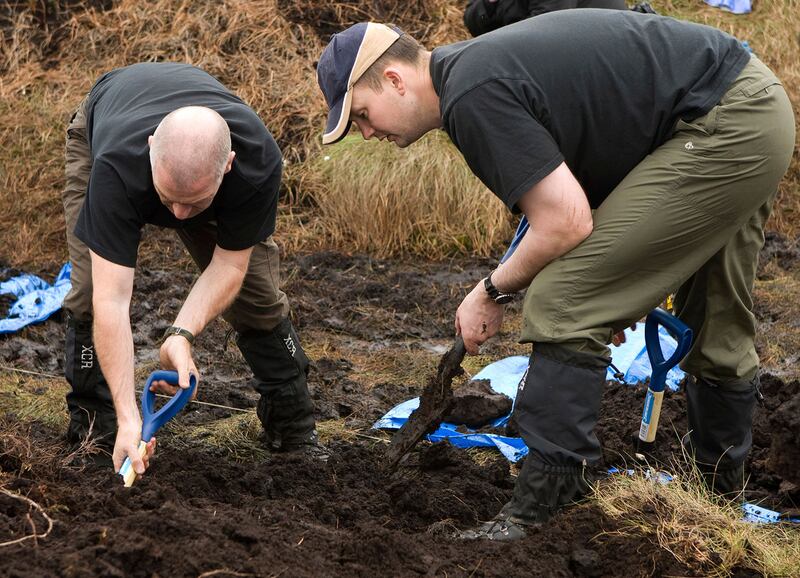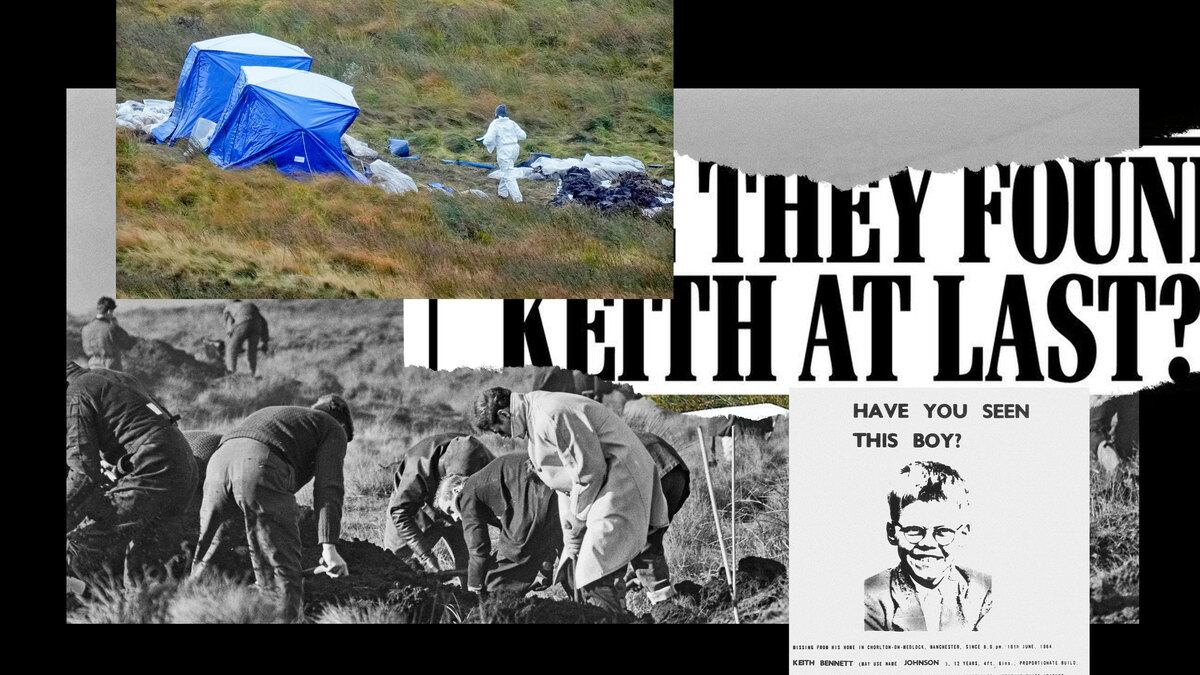Keith Bennett was walking to his grandmother’s house in Manchester, northwest England, when he disappeared in June 1964, just four days after his 12th birthday. It would be 20 years before his family’s worst fears were confirmed: Keith had been lured into a car by a couple, Myra Hindley and Ian Brady, who then drove him to the desolate Saddleworth Moor. There, Brady sexually assaulted and murdered Keith before burying his body in a makeshift grave.
Keith was one of five children killed by Hindley and Brady—known in Britain as the Moors Murderers for where they buried their victims—between 1963 and 1965. The pair were caught and jailed for life when Hindley’s brother-in-law went to the police after witnessing an axe attack on the couple’s last victim, Edward Evans.
Unlike their other victims, Bennett is the only one who has never been found. Keith’s mother, Winnie Johnson, never gave up the search for her lost boy, repeatedly appealing to her son’s killers to reveal where they left her son on the lonely moorland. In 1986, Hindley even agreed to help, sparking a huge search carried out by over 100 police officers, but they found nothing. Hindley died in 2002 and Brady died in 2017. Winnie died in 2012, with her wish to find Keith unfulfilled.
It seemed like Keith may never be found. Then, in September this year, new hope emerged. A picture in the Daily Mail showed forensic investigators on Saddleworth Moor under the headline: “HAVE THEY FOUND KEITH AT LAST?
The story said that police had started digging in the grasslands once again after a skull had been “found,” and that the “suspected skeletal remains include what experts believe to be a child’s upper jaw with a full set of teeth.” Keith’s family “hoped his body would finally be found.” John Ainley, a lawyer for Keith’s surviving brother, Alan Bennett, said his client “was keeping an open mind,” while cautioning that previous claims had “raised expectations but not resulted in finding Keith’s body.”
Specialist officers with Greater Manchester Police were dispatched to Saddleworth Moor to confirm the find. But within a week the force issued a statement saying the search was over. “At this time, there is no evidence of the presence of human remains,” the statement read. The jaw, which had appeared to be the most promising piece of evidence, was “considerably smaller than a juvenile jaw and it cannot be ruled out that it is plant-based,” police said.

Mrs Winifred Johnson, mother of missing boy Keith Bennett, pictured on Saddleworth Moor, with a photograph of her son, 25th January 1995.
Manchester Evening News/Mirrorpix/Getty ImagesDefending the fruitless search, Chief Constable Stephen Watson told the BBC that police had been given a tip about Keith’s whereabouts which “on the face of it was credible.” “We don't just disappear off with any sort of crackpot-type information,” Watson added, but said the tip had ultimately been “an unwelcome distraction because it proved not to have any validity.”
That tip, and the hope it generated, had come from an amateur sleuth named Russell Edwards. Edwards, 56, says he’d taken up investigative work after becoming financially successful with ventures in software and running care homes. After seeing the 2001 Johnny Depp film From Hell, he became interested in the case of Jack the Ripper—the notorious serial killer who brutally murdered and mutilated at least five women in London’s East End in the fall of 1888.
“Here I was, early forties, lots of money, free as a bird, and I thought: ‘You know what? Give this a little go and see where it takes you,’” Edwards tells The Daily Beast. Where it took him, it turned out, was spending years investigating the legendary case and eventually publishing his 2014 book, Naming Jack The Ripper, in which he claimed to have finally identified the Ripper.
But despite his claims, which were based on DNA evidence from a shawl purportedly collected from the scene of the Ripper’s fourth victim, some remained skeptical about his conclusions. One former murder detective who spent over a decade examining the Ripper case went so far as to dismiss the book’s findings as “inconclusive and unsafe,” adding that he believed Edwards’ conclusion was a “total fantasy,” according to the Daily Star.
“There’s a Ripper community—they all hated it,” Edwards tells the Daily Beast about the response to the book. “They just tried to slur my name. But you can’t get past the facts of what we’ve done.” He added that guides and companies running Ripper tours in London had a “vested interest to keep this a mystery” and that’s why they “all went to town” on him.
Undeterred by the response, Edwards turned his attention to finding Keith Bennett a year later. Edwards was born and raised in Birkenhead around 45 miles from Saddleworth Moor, and he says he volunteered to help search the moor for Keith in the late ’80s. (In 1987, following new investigative cooperation from Hindley, the body of 16-year-old Pauline Reade— who was murdered by Brady and Hindley in 1963—was found on the moor after an extensive search.)

A search is carried out on Saddleworth Moor for missing children Keith Bennett (top right), Pauline Reade (bottom left) and John Kilbride (bottom right), October 1965. All three were the victims of so-called Moors Murderers Ian Brady and Myra Hindley.
Keystone/Hulton Archive/Getty ImagesEdwards said he was, in part, motivated to find Keith out of sympathy for the parents of the victims. “I’m a father of three,” Edwards says. “I’ve got a 17-year-old, a 13-year-old, and a 1-year-old. It’s hard to imagine what it would be like for the parents.” In his Ripper book, Edwards also details losing children through miscarriage. “I understand that loss,” he says. “But when your children are taken away from you on that level, and those people [the killers] are still alive, God knows what must be going on for the family.”
After starting his own independent investigation into finding Keith in 2015, Edwards was repeatedly disappointed. In July this year, he set out on what he believed would be his last visit to the moor. “I was going to give it up,” Edwards says. “I’d promised my kids at this point, because seven years is a long time to do this and I’ve had lots and lots of failures, and I’ve driven away from there nearly in tears with just… not rejection, that’s not the right word, just defeat, utter defeat, that I haven’t found him.”
But while walking on the moor this summer, something caught his eye. “I spotted something and thought: ‘Hang on, this is very much a grave.’” Edwards collected soil samples from the site and sent them to a geologist who, Edwards claims, told him six weeks later: “There’s calcium there that shouldn’t be there. She said there’s magnesium, there’s phosphorus—everything from a body is in that soil from that site.”
Returning to Saddleworth with others in September, Edwards started digging at the site where he’d collected the promising samples. Around three feet down, Edwards said something that “looked like blubber” started coming out of the ground. He says he then made a video call to a forensic archeologist who he alleges told him: “That’s adipose tissue, that’s body tissue.” But the kicker came the following day when, after reviewing photos of the dig, the archeologist noticed what appeared to be an upper jaw bone with two front teeth and one molar. “Up to the age of 12, the upper jaw of a 12-year-old will only have one molar,” Edwards says.
It was then that Edwards decided to go to the authorities. “We gave the evidence to the police when we knew that we weren’t gonna waste anyone’s time,” Edwards says. He says he met police on the moor and they “saw the jaw straight away.”
With the investigation underway, Edwards began speaking to the British media about his investigation, even proffering a theory that Brady may have positioned the burial sites of his victims in such a way as to form the shape of a swastika (Brady had been fascinated by Nazism and read extracts of Mein Kampf to Hindley.)
But as the police investigation continued and the days ticked by, the anticipated news that Keith’s remains had finally been found never materialized. Edwards says police even took him back to the dig site. “They said: ‘Look, we didn’t find him,’” Edwards says. “Of course, all I can tell you at this point is—the only one thing I can tell you that’s not known—is I told them I don’t believe them.” He adds: “Because they haven’t found [Keith’s body] doesn’t mean it wasn’t there.”
When pressed about why police would not disclose finding Keith, Edwards says: “This is where I can’t tell you any more. That’s all I can tell you.” Greater Manchester Police declined to comment for this article, referring only to their most recent statement about the search based on Edwards’ tip being completed.
As it appeared that the case had fallen apart, Edwards started receiving angry online abuse. He says two examples out of an estimated 800 said “You horrible cunt, you should die,” and “When people think of Ian Brady and Myra Hindley, you will be in the bracket with them.”

In this undated handout photo supplied by the Greater Manchester Police, a police search team looks for the body of Moors murder victim Keith Bennett. In 2009 the search operation for the missing remains of Keith Bennett will enter a dormant phase after Greater Manchester Police exhausted all of the avenues currently available to them.
Greater Manchester Police via Getty ImagesBut it wasn’t just anonymous observers who were upset by Edwards’ unsubstantiated claims. Alan Bennett, Keith’s brother, wrote on Facebook: “Will he apologize for the anguish, anger, hurt and distress he has caused by his thoughtless, heartless and publicity seeking actions?” He added: “I'm just left with a feeling of utter contempt for him and his actions and I know the rest of Keith's family feel the same, along with anger and pain.”
Edwards said he would like to “sit with Alan and tell him the full story.” But will he apologize over the investigation? “Why would I give him an apology when I know something else that you don’t?” Edwards said. Alan Bennett could not be reached for comment.
Despite the calls for him to stop, Edwards intends to carry on with his investigation into Keith’s whereabouts, adding that he will reveal more “shortly.” He also plans to start a new investigation into a “major high-profile” mystery in the U.S., but he would not give details other than to say: “It’s not JFK.”
The question is why, after being asked to stop by those who his activities affect the most, would he carry on?
“I’ve done the money thing,” Edwards says. “It just isn’t the kick. The kick is just being able to do something so significant and something that other people can’t do, you know? So that’s the drive. And sooner or later, I’ll get recognition for it.”






